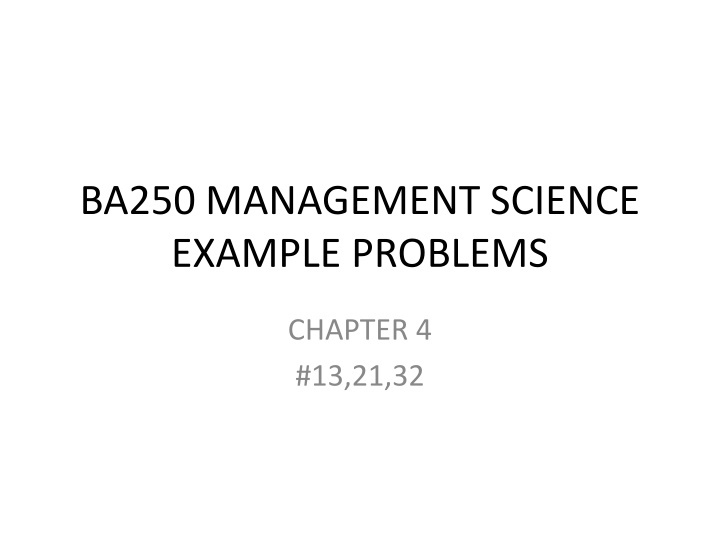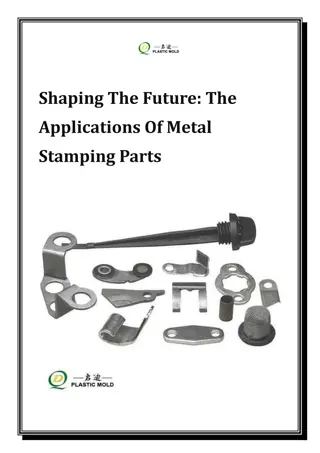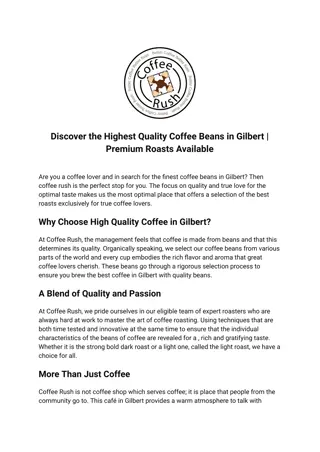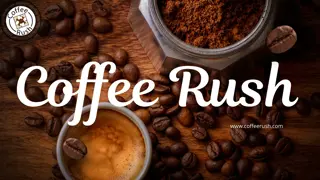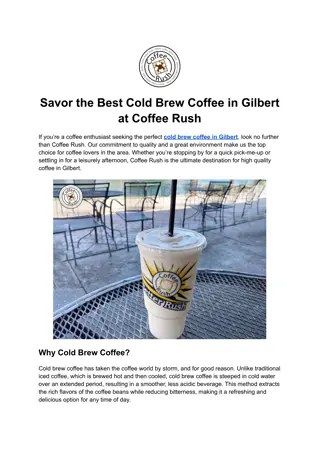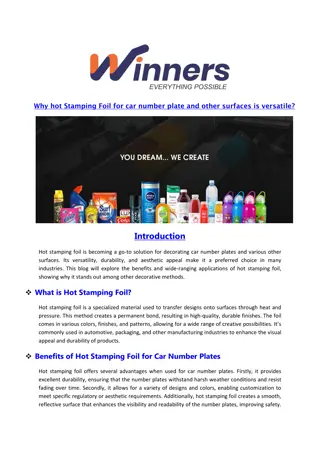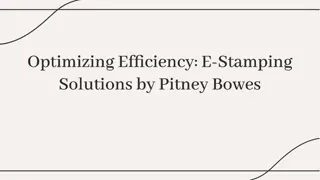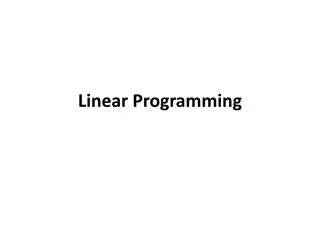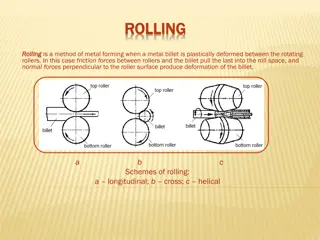Linear Programming Models for Fertilizer Production, Metal Stamping, and Coffee Blending
The examples provide real-world scenarios requiring the formulation of linear programming models. The first involves the Kalo Fertilizer Company deciding on daily production quantities of two lawn fertilizer brands given resource constraints, costs, and demand. The second scenario explores the optimization of product manufacturing on different machines at Midland Tool Shop to maximize profits within time constraints. Lastly, the Mill Mountain Coffee Shop blends coffee varieties to maximize profit by meeting blend recipe requirements and ingredient availability. Linear programming is used to solve these business optimization problems.
Download Presentation

Please find below an Image/Link to download the presentation.
The content on the website is provided AS IS for your information and personal use only. It may not be sold, licensed, or shared on other websites without obtaining consent from the author.If you encounter any issues during the download, it is possible that the publisher has removed the file from their server.
You are allowed to download the files provided on this website for personal or commercial use, subject to the condition that they are used lawfully. All files are the property of their respective owners.
The content on the website is provided AS IS for your information and personal use only. It may not be sold, licensed, or shared on other websites without obtaining consent from the author.
E N D
Presentation Transcript
BA250 MANAGEMENT SCIENCE EXAMPLE PROBLEMS CHAPTER 4 #13,21,32
13) The Kalo Fertilizer Company produces two brands of lawn fertilizerSuper Two and Green Growat plants in Fresno, California, and Dearborn, Michigan. The plant at Fresno has resources available to produce 5,000 pounds of fertilizer daily; the plant at Dearborn has enough resources to produce 6,000 pounds daily. The cost per pound of producing each brand at each plant is as follows: The company has a daily budget of $45,000 for both plants combined. Based on past sales, the company knows the maximum demand (converted to a daily basis) is 6,000 pounds for Super Two and 7,000 pounds for Green Grow. The selling price is $9 per pound for Super Two and $7 per pound for Green Grow. Fresno Dearborn Product Super Two 2$ 4$ Green Grow 2$ 3$ Formulate a linear programming model for this problem.
21) The Midland Tool Shop has four heavy presses it uses to stamp out prefabricated metal covers and housings for electronic consumer products. All four presses operate differently and are of different sizes. Currently the firm has a contract to produce three products. The contract calls for 400 units of product 1; 570 units of product 2; and 320 units of product 3. The time (in minutes) required for each product to be produced on each machine is as follows: MACHINE PRODUCT 1 2 3 4 1 35 41 34 39 2 40 36 32 43 3 38 37 33 40 Machine 1 is available for 150 hours, machine 2 for 240 hours, machine 3 for 200 hours, and machine 4 for 250 hours. The products also result in different profits, according to the machine they are produced on, because of time, waste, and operating cost. The profit per unit per machine for each product is summarized as follows: PRODUCT 1 2 3 4 MACHINE 1 7.8$ 7.8 8.2 7.9 Formulate this problem as a linear programming model. 2 6.7 8.9 9.2 6.3 3 8.4 8.1 9.0 5.8
32) The Mill Mountain Coffee Shop blends coffee on the premises for its customers. It sells three basic blends in 1-pound bags, Special, Mountain Dark, and Mill Regular. It uses four different types of coffee to produce the blends Brazilian, mocha, Columbian, and mild. The shop has the following blend recipe requirements: Blend Mix Requirements At least 40% Columbian, at least 30% mocha At least 60% Brazilian, no more than 10% mild No more than 60% mild, at least 30% Brazilian Selling Price/Pound $6.50 5.25 3.75 Special Dark Regular The cost of Brazilian coffee is $2.00 per pound, the cost of mocha is $2.75 per pound, the cost of Columbian is $2.90 per pound, and the cost of mild is $1.70 per pound. The shop has 110 pounds of Brazilian coffee, 70 pounds of mocha, 80 pounds of Columbian, and 150 pounds of mild coffee available per week. The shop wants to know the amount of each blend it should prepare each week to maximize profit. Formulate a linear programming model for this problem.
